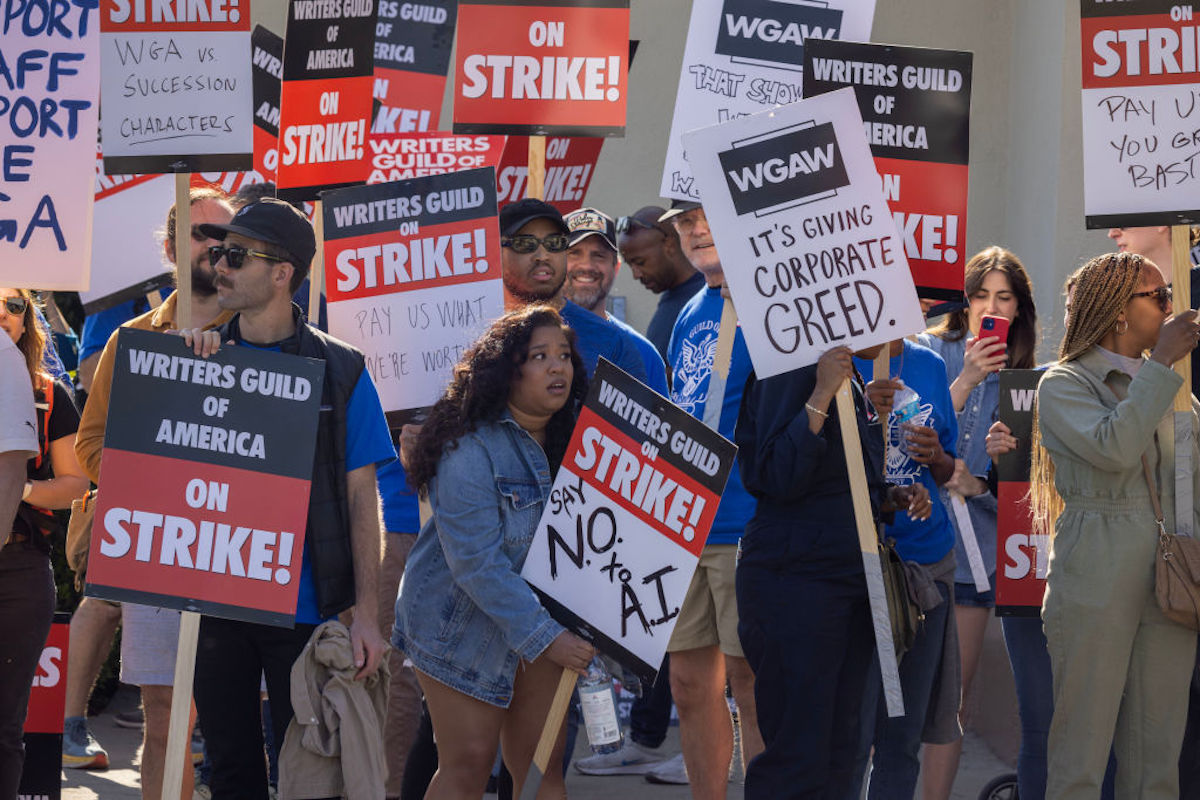Differences Between Hollywood Labor Unions Mean Not Everyone Can Join the WGA Strike, Even if They Want To

With the Writers Guild of America (WGA) labor union implementing a strike as of May 2, 2023, Hollywood labor unions have become a hot topic of discussion. The WGA, which is composed of the WGA East and WGA West labor unions, called for the strike after negotiations with the Alliance of Motion Picture and Television Producers (AMPTP) for a new contract proved unsatisfactory. The WGA had been negotiating with the AMPTP for weeks over concerns regarding compensation, the loss of residuals from streaming, the rise of mini rooms, and the need to regulate the usage of A.I. in the writing process.
The AMPTP’s failure to provide solutions for these concerns led to the WGA calling for a strike that obligated all 11,500 of its members to withhold writing services. This has led to several shows and movies being delayed and marks the first time in 15 years that the organization has implemented a strike, and was entirely necessary given how much the Hollywood scene is changing with the rise of streaming and advancements in A.I., and the AMPTP’s refusal to address writers’ related concerns.
These issues are impacting more than just the writers of Hollywood, but also animators, directors, producers, and actors. For those not familiar with the inner workings of the industry, the existence of multiple major Hollywood labor unions may raise confusion and even misplaced anger about the WGA strike.
There may be questions of why other unions aren’t striking or negotiating to support the WGA or why some shows protected under other unions aren’t halting production for the writer’s strike. The answer lies in the fact that, though all connected, each labor union is also different. All of Hollywood’s major labor unions are connected by the AMPTP. This is because the AMPTP is the major bargaining representative for the entertainment industry and is responsible for negotiations with nearly every major labor union in Hollywood. Hence, every major labor union bargains and negotiates contracts with the AMPTP for better working conditions. Where they differ is in the scheduling of these contracts.
Hollywood labor union differences explained
Every major labor union signs a contract with the AMPTP. The writer’s strike arose because the WGA’s contract expired before a new bargain was struck. New contracts are typically bargained every three years. Hence, several unions that signed contracts in 2020 will begin bargaining for their new three-year contracts this year. However, it’s important to remember these contracts don’t all expire on the same date. While the WGA’s contract expired on May 1st, the Directors Guild of America (DGA) and Screen Actors Guild – American Federation of Television and Radio Artists (SAG-AFTRA) contracts won’t expire until June 30. For the Animation Guild Local 839 and its parent organization, the International Alliance of Theatrical Stage Employees (IATSE), their contracts don’t expire until July 31, 2024.
Meanwhile, most writers on animated shows are protected under the Animation Guild rather than the WGA. This is why writing on animated shows like the Phineas and Ferb revival has continued despite the WGA strike. The announcement that writing was occurring on the show led to some criticizing animation writers. However, animation writer Benjamin Siemon explained that if animation writers within the Animation Guild go on strike, they will be fired.
As mentioned above, the WGA was able to strike when its contract expired. A union can also strike before the implementation of a new contract. However, a union cannot strike while still under an active contract with the AMPTP. The majority of labor unions in Hollywood are on different contract schedules. Hence, even if these unions support the WGA and have shared grievances with the AMPTP, their hands are tied when it comes to striking. (It’s worth noting that other Hollywood unions have indicated support for WGA’s strike and may also strike in the near future.)
Plus, who is protected under each guild isn’t as straightforward as one might think. Divisions exist between the areas of live-action TV and film, animation, and theatre. For example, rather than there being one union to represent all Hollywood writers, there’s a separate union for TV/film writers, playwrights, animation writers, and film score composers. This is why it’s important to know which union one belongs to and when their contract expires before condemning them for not joining the WGA’s strike.
(featured image: David McNew/Getty Images)
Have a tip we should know? tips@themarysue.com